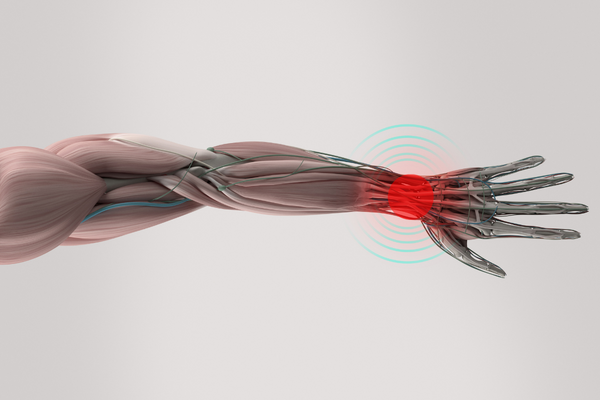We hear about Carpal Tunnel Syndrome everyday. The moment your hand falls asleep and you get the pins and needles in your fingers, somebody is bound to suggest that it is CTS. However, this is because most people do not have a clear understanding of what Carpal Tunnel Syndrome is. Understanding the physiognomy is important if you want to understand CTS.
The wrist is the slimmest part of the human body. Slim wrists have been considered a sign of beauty for centuries, but people with smaller wrists, it is now known, are at higher risk for CTS.
The carpals are the bones you feel when you touch your wrist. In the wrist is the carpal tunnel, which is enclosed by the carpals on three sides, and on the fourth side, by a transverse carpal ligament. Within this narrow space, is not only the median nerve, but also nine flexor tendons. These tendons help you bend your wrist. As you can imagine, it’s a pretty tight squeeze. If for some reason the carpal tunnel is too small, or if the tendons within the tunnel become larger, your median nerve will be compressed.
It is through the median nerve that you get sensation in your thumb, forefinger, middle finger, and part of your ring finger. When the median nerve is compressed, sensation to these fingers will begin to reduce. You will begin to feel a sort of numbness, or a tingling – rather like your hand is falling asleep.
When you bend your wrist, to form a right angle, the carpal tunnel becomes much narrower. And when you stop to think about it, you will see that most activities, from playing the guitar to typing to having your lunch to pushing a swing, require your wrist to bend. Keeping it bent for prolonged periods of time – like when you type for a long time – compresses the median nerve, and causes the symptoms of CTS. If you do this repeatedly, you could be left with a clear cut case of Carpal Tunnel Syndrome.
Another possibility is that repeated stress on your wrist can injure the tendons in the carpal tunnel. This makes the already narrow space even narrower, and can cause the median nerve to be compressed. This is why anti-inflammatory medicines give relief – once the tendons are back to normal, the carpal tunnel is back to normal, too.
In some cases, there might be a tumour in the wrist. This could also cause compression to the median nerve.
Some other reasons that might result in the inflammation of your tendons are hypothyroidism, pregnancy and diabetes. In such cases, the underlying causes need attention, though anti-inflammatory medicines could still help.
Knowing the facts about Carpal Tunnel Syndrome is important, because a lot of other things, like tendonitis or even bursitis, are ignored after wearing a wrist splint because everybody seems to assume that ay pain in the arm anywhere is CTS. While wearing a wrist splint might not do much harm, it won’t cure anything, either.



CTS
TO NICE CASE STADY